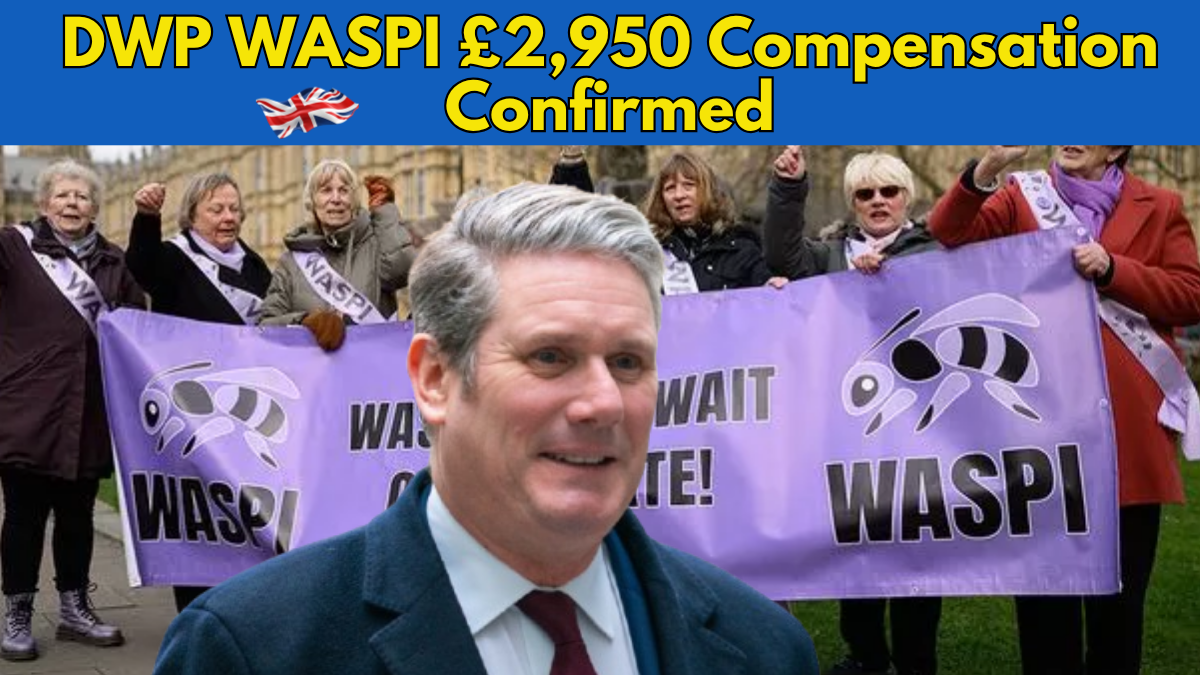Women born in the 1950s continue to live with the consequences of State Pension age increases legislated in 1995 and 2011. By October 2025, an estimated 3.8 million women are still affected by the shift from age 60 to 65 and then to 66. In March 2024, the Parliamentary and Health Service Ombudsman found maladministration in how the Department for Work and Pensions communicated the changes and suggested redress at Level 4 on its injustice scale, which corresponds to payments of £1,000 to £2,950 per person. The Ombudsman asked Parliament to decide whether and how to compensate. As of October 2025, the UK Government has not approved a compensation scheme and no official payment timetable exists. This article explains the background, what the £2,950 figure really means, the political and legal milestones to watch, and practical steps affected women can take to stay informed without falling for scams.
Table of Contents
Background: How We Reached This Point

Two pieces of legislation reshaped the UK State Pension age. The 1995 Act set a path to align women’s pension age with men’s, while the 2011 Act accelerated the timetable and moved the target to 66. The WASPI campaign was formed not to oppose equalisation in principle, but to challenge the way the changes were communicated. Many women reported that they received little or no timely notice, making it difficult to plan retirement savings, exit the labour market smoothly, or adjust for health and caring responsibilities.
The PHSO agreed that communication fell short. It concluded that DWP did not adequately inform those affected and that this failure caused real-world financial and emotional harm. The Ombudsman does not award money directly. Instead, it recommended that Parliament arrange a financial remedy using its injustice scale and pointed to Level 4 as proportionate.
Quick Summary
Item |
Details |
|---|---|
Who is affected |
Women born roughly between 6 April 1950 and 5 April 1960 who saw State Pension age rise |
Ombudsman finding |
Maladministration in DWP communications about the pension age changes |
Recommended redress |
Level 4 on the PHSO injustice scale equal to £1,000 to £2,950 per person |
Government position |
No confirmed scheme or budget as of October 2025 |
Key near term events |
Private Member’s Bill in progress and a High Court hearing listed for 9 to 10 December 2025 |
Likely start of any payments |
Not before mid to late 2026 if Parliament legislates and funds a scheme |
Official site |
Understanding the £2,950 Figure
The widely quoted £2,950 is not a guaranteed payout. It is the top of the Level 4 band that the Ombudsman suggested as a fair benchmark. Any actual scheme would still need legislation, a detailed set of rules, and funding. Parliament could choose a flat award for all eligible women or a tiered model that links award size to the degree of impact. Either approach would carry a large fiscal cost. Past estimates have ranged into the multi billion pound range, which is the main reason ministers have hesitated.
Key points to remember
- £2,950 is a ceiling within a recommended range, not a confirmed amount.
- No universal payment date has been set for 2025.
- Eligibility rules would be created only if Parliament passes a law.
Government Response and the Political Climate
In late 2024 the Government declined to set up a compensation scheme, citing cost pressures and administrative complexity. That stance prompted renewed debate across Parliament. More than two hundred MPs have signalled support for exploring some form of redress and the Work and Pensions Select Committee has continued to monitor developments. In early 2025 a Private Member’s Bill titled Women’s State Pension Age Ombudsman Report and Compensation Scheme Bill was introduced to build a legal framework for payments. Private Member’s Bills rarely pass without Government backing, but they can shape negotiations and keep the issue on the agenda.
Legal Context and 2025 to 2026 Milestones
Courts cannot instruct Parliament to pay compensation. They can however influence the policy debate by interpreting the legal responsibilities of public bodies. A High Court hearing connected to the broader WASPI issues is listed for 9 to 10 December 2025. A judgment in early 2026 could change the political calculus, especially if it sharpens the critique of past communications. Even with a favourable legal outcome, payments would still require Parliamentary approval and budget cover.
Indicative path if Parliament acts
- Bill introduced and debated in 2025 to 2026
- Funding lines negotiated during fiscal events
- Scheme design finalised with a delivery body and appeals process
- Rollout begins in phases, potentially from mid to late 2026 onward
Possible Models If a Scheme Is Created
- Flat rate award
Every eligible claimant receives the same amount. This is administratively simple, less time consuming to verify, and reduces appeals risk. The downside is that it does not distinguish between degrees of harm. - Tiered award
Payments vary with evidence of impact such as delayed retirement, loss of earnings, or acute hardship. This targets money more precisely but takes longer to administer and costs more to verify.
Likely delivery features
- Beneficiaries identified using National Insurance records
- Automatic invitations issued to those who meet baseline criteria
- A defined window to submit additional evidence if the model is tiered
- Appeals overseen by an independent panel to maintain trust
- Payments issued via secure bank transfer in staged batches
Scenarios for 2025 to 2027
Scenario |
Preconditions |
Earliest realistic payments |
Current likelihood |
|---|---|---|---|
Parliament legislates and funds a scheme |
Bill passes and budget allocated |
Mid to late 2026 |
Moderate if cross party support grows |
Policy shift after court judgment |
Political review follows an adverse judgment for the Government |
Late 2026 to early 2027 |
Possible |
No legislative action |
Fiscal or political barriers persist |
No payments |
High as of October 2025 |
How to Protect Yourself From Scams
The attention around potential compensation has attracted fraudsters. Be wary of unsolicited emails or texts that request bank details or upfront fees. There is no official application portal at present. If a scheme is approved, the invitation to claim would reference your National Insurance record and would be signposted through GOV.UK and major broadcasters. Never share passwords, one time codes, or full card numbers with anyone who contacts you first.
Safe sources
- GOV.UK pages for DWP and Parliament
- Communications from the Work and Pensions Select Committee
- Verified statements from the Ombudsman and the official WASPI campaign
What Affected Women Can Do Now
- Keep personal details current with HMRC and DWP, especially your address and bank account, to receive any official correspondence promptly.
- Retain documents that show how pension age changes affected your work or finances. If a tiered model is chosen later, contemporaneous records can help.
- Follow debates and committee reports so that you know when a Bill gains momentum.
- Ignore social media promises of instant £2,950 payments. There is no authorised application route at this time.
Frequently Asked Questions
1. Is a £2,950 payment confirmed for October 2025
No. The £2,950 figure is the top of a recommended range from the Ombudsman. Parliament has not authorised a scheme or set a timetable.
2. Who might be eligible if a scheme is approved
Women born in the 1950s who were affected by State Pension age increases. Exact eligibility would be set in legislation and may include additional criteria.
3. When could payments start if Parliament agrees a scheme
The fastest credible window is mid to late 2026 because legislation, funding, system build, and testing all take time.
4. Will I need to apply or will payments be automatic
If a scheme is flat rate and record based, many payments could be largely automated using National Insurance data. A tiered scheme would likely include an application step with evidence.
5. How large could the total scheme cost be
Public estimates have run into the multi billion pound range. The overall price tag is a major factor in current policy decisions.
6. How do I avoid scams while I wait
Use only official GOV.UK pages, never pay a fee to apply, and never share passwords or one time codes.
Official Site
For verified updates, visit
https://www.gov.uk/government/organisations/department-for-work-pensions
For More Information Click HERE











